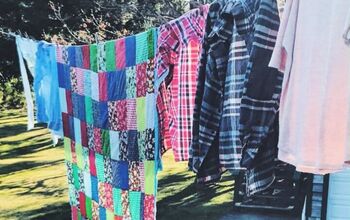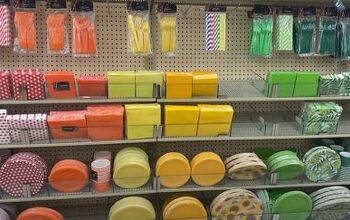Sewing & Mending Skills From the Great Depression: Make Clothes Last

During the Great Depression, resources were scarce, and families had to stretch every dollar as far as possible. One of the most valuable skills passed down from this era was the ability to mend and make clothes last longer. With a bit of creativity, resourcefulness, and basic sewing techniques, people transformed worn-out garments into something usable again, avoiding the need to purchase new clothing.
Today, as many people seek to live more sustainably, these time-tested skills are making a comeback. Let’s explore some essential sewing and mending techniques from the Great Depression that can help you repair, reuse, and extend the life of your wardrobe.
Table of contents
Disclaimer: Simplify may receive a small affiliate commission from purchases made via links in this article but at no cost to you.
1. Darning: Fixing Holes in Fabric
Darning is one of the simplest and most effective ways to repair holes in garments, especially in areas that experience heavy wear, such as socks, elbows, and knees.
How to Darn:
- Materials Needed: A darning needle, thread or yarn, and a darning egg (or similar object like a small ball or lightbulb to hold the fabric taut).
- Steps:
- Place the darning egg inside the garment under the hole to create a smooth, flat surface.
- Using thread or yarn, weave a series of parallel stitches across the hole, leaving some space between them.
- Turn the fabric 90 degrees and weave more stitches through the first set, creating a woven patch that fills the hole.
- Tie off the ends securely.
Wood Darning Egg Sewing Tool Repair for Darning
Darning not only fixes holes but can also reinforce weak areas before they tear, ensuring your clothing lasts longer.
2. Patching: Covering Large Tears or Worn Areas
When fabric is too damaged to darn, patching is an excellent solution. During the Great Depression, people often saved fabric scraps to use as patches for clothes, giving old items a new lease on life.
How to Patch:
- Materials Needed: A patch (cut from scrap fabric or a store-bought patch), needle, thread, and scissors.
- Steps:
- Cut a patch slightly larger than the hole or worn area.
- Fold the edges of the patch under to create a clean, finished edge.
- Place the patch over the hole and pin it in place.
- Sew the patch to the garment with a whip stitch, blanket stitch, or straight stitch, being sure to catch the edges securely.
- For extra durability, use a zig-zag stitch or double-stitch along the patch’s edge.
Coquimbo Sewing Kit
Patching is versatile and works well on jeans, jackets, and even bags. You can even use contrasting fabric to add a decorative element to the repair.
3. Replacing Buttons: A Quick Fix for Everyday Wear
A lost button doesn’t mean the end of a garment. Replacing buttons was a common skill during the Great Depression, and it’s an easy repair anyone can do with just a needle and thread.
How to Replace a Button:
- Materials Needed: A replacement button (similar size and style), needle, and thread.
- Steps:
- Thread your needle and tie a knot at the end.
- Position the button over the original spot, aligning it with the buttonholes.
- Sew the button through its holes (typically 2 or 4 holes), making sure it is secure but not too tight.
- After sewing through the holes several times, wrap the thread around the base of the button to create a thread shank (for flexibility).
- Tie off the thread and trim the excess.
Greentime 1500 pcs Round Resin Buttons
Learning how to sew on a button is a practical skill that will save you from having to replace shirts, coats, or pants prematurely.
4. Hemming: Adjusting the Length of Garments
Whether your clothes are too long or fraying at the bottom, hemming is a valuable skill to extend their life. During the Great Depression, many people adjusted hand-me-down clothing to fit properly by hemming pants, skirts, and dresses.
How to Hem:
- Materials Needed: Needle, thread, pins, scissors, and an iron.
- Steps:
- Measure and fold the fabric to the desired length, using pins to hold it in place.
- Iron the folded edge to create a sharp crease.
- Sew along the folded edge using a blind hem stitch or straight stitch, depending on how visible you want the stitches to be.
PurSteam Steam Iron for Clothes
- For a more durable hem, use a sewing machine with a straight or zig-zag stitch.
Brother CS7000X Computerized Sewing and Quilting Machine
Hemming allows you to make clothing fit perfectly, giving old garments a fresh look and preventing frayed edges from getting worse.
5. Tapering and Reshaping Garments: Adjusting Fit for Longevity
During the Great Depression, it wasn’t uncommon for people to refashion garments to better suit their needs. Whether due to hand-me-downs, body changes, or simply updating a look, people found ways to alter clothing for better fit and style.
How to Taper or Reshape Clothing:
- Materials Needed: Needle, thread, pins, scissors, and a measuring tape.
- Steps:
- Try on the garment and pin the areas that need to be taken in or reshaped (e.g., side seams, waistbands, sleeves).
- Use a measuring tape to ensure both sides are even.
- Sew along the pinned lines with small, secure stitches or use a sewing machine.
- Trim any excess fabric if necessary.
GDMINLO Soft Tape Measure
With this skill, you can turn an ill-fitting or outdated piece of clothing into something that’s comfortable and flattering.
6. Creative Upcycling: Transforming Old Clothes Into Something New
The concept of “waste not, want not” was key during the Great Depression, and many people found ways to upcycle old clothes into something entirely new. Dresses were turned into aprons, men’s shirts became children’s garments, and scraps were sewn into quilts or patchwork clothing.
How to Upcycle:
- Ideas:
- Turn old jeans into shorts: Cut the legs off and hem the edges to create durable shorts.
- Repurpose worn t-shirts into rags: Cut up old t-shirts and use them as cleaning cloths.
- Make a quilt from scraps: Use small fabric scraps from worn-out clothes to create a cozy patchwork quilt.
Upcycling not only extends the life of clothing but also reduces waste and encourages creativity. Check out some of Upstyle creator Jessica Shaw's ideas here:
Conclusion: Embrace the Spirit of Resourcefulness
The sewing and mending skills passed down from the Great Depression era teach us the value of making do with what we have. Whether you’re fixing a hole, replacing a button, or creatively upcycling old clothes, these skills help you reduce waste, save money, and create a more sustainable wardrobe.
By learning these simple but effective techniques, you can take control of your wardrobe’s longevity and embrace a more mindful, eco-friendly approach to fashion. The next time a favorite garment gets a little worn, remember: it’s not the end—it’s an opportunity to make it last.



































Comments
Join the conversation